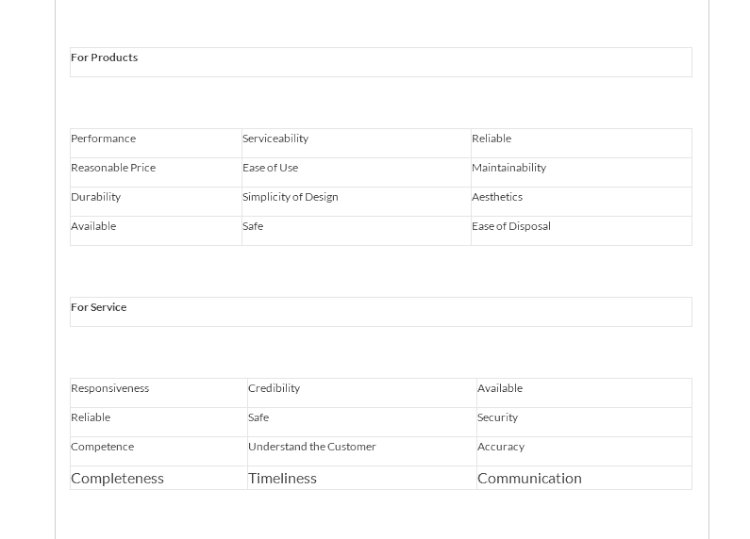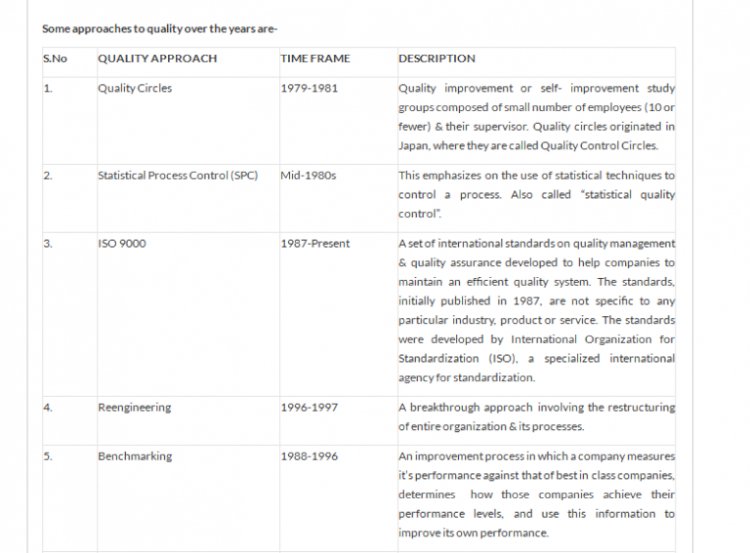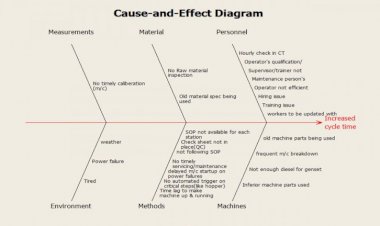Evolution of Continuous Quality Improvement As A Methodology
"The Article has explained about the evolution of continuous quality Improvement As A Methodology. The meaning of quality is also time-based or situational.
The Article has explained about the evolution of continuous quality Improvement As A Methodology. The meaning of quality is also time-based or situational.
What Is Quality?
The meaning of quality differs depending upon circumstances and perceptions. For example, quality is a different concept when focusing on tangible products versus the perception of a quality service. The meaning of quality is also time-based or situational.
Evolution of Continuous Quality Improvement As A Methodology
Common Meanings of Quality:
1- Quality is fitness for use:
*Quality means the product or service does what it is intended to do.
*Poor quality of a product or service cost users if it doesn’t do what it is supposed to do.
2- Quality is meeting customer expectations:
*Quality is satisfying the customer.
*The customer defines quality.
*The customer perceives the quality of a product or service.
3- Quality is exceeding the customer expectations.
*Quality is the extent to which the customers or users believe the product or service surpasses their needs and expectations.
*Quality is delighting the customer.
4- Quality is superiority to competitors:
*Quality is how a company’s products and services compare to those of competitors or how they compare to those offered by the company in the past.
Examples of Quality Characteristics
Continuous improvement is an ongoing effort to improve products, services or processes. These efforts can seek “incremental” improvement over time or “breakthrough” improvement all at once.
Among the most widely used tools for continuous improvement is a four-step quality model—the plan-do-check-act (PDCA) cycle, also known as Deming Cycle or Shewhart Cycle:
Plan: Identify an opportunity and plan for change.
Do: Implement the change on a small scale.
Check: Use data to analyze the results of the change and determine whether it made a difference.
Act: If the change was successful, implement it on a wider scale and continuously assess your results. If the change did not work, begin the cycle again.
Other widely used methods of continuous improvement — such as Six Sigma, Lean, and Total Quality Management — emphasize employee involvement and teamwork; measuring and systematizing processes; and reducing variation, defects and cycle times.
Milestones in the path of Quality management
Walter A. Shewhart, (1931) developed & used control charts during his tenure at Hawthorne plant of Western Electric and is known as the father of Statistical Quality Control (SQC) he brought together the disciplines of statistics, engineering and economics.
Soon after, W. Edwards Deming (1986) developed a list of 14 points in which emphasized the need for change in management structure and attitude.
These are:-
1.Create constancy of purpose for improvement of product and service.
2.Adopt a new philosophy.
3.Cease dependence on inspection to achieve quality.
4.End the practice of awarding business on the basis of price tag alone. Instead, minimize total cost by working with a single supplier.
5.Improve constantly & forever every process by planning, production, & service.
6.Institute training on the job.
7.Adopt & institute leadership.
8.Drive out fear.
9.Break down barriers between staff areas.
10.Eliminate slogans, exhortations, and targets for the workforce.
12.Eliminate numerical quotas for the workforce & numerical goals for management.
14.Remove barriers that rob people of pride of workmanship. Eliminate the annual rating or merit system.
15.Institute a vigorous program of education & self-improvement for everyone.
16.Put everybody in the company to work to accomplish the transformation.
In addition, Joseph M. Juran developed the Juran Trilogy, three managerial processes- Quality Planning, Quality Control, and Quality Improvement-for use in managing the quality.
This approach to quality improvement includes-
1.Create awareness of the need & opportunity for improvement.
2.Mandate quality improvement; make it a part of every job description.
3.Create the infrastructure: Establish a quality council, select projects for improvement, appoint teams, provide facilitators.
4.Provide training on how to improve quality.
5.Review progress regularly.
6.Give recognition to the winning teams.
7.Propagandize the results.
8.Revise the reward system to enforce the rate of improvement.
9.Maintain momentum by enlarging the business plan to include goals for quality improvement.
Joining the lead was Philip B. Crosby, who originated the zero defects concept.
His 14 steps to Quality Improvement are-
1.Make it clear that management is committed to quality.
2.Form quality improvement teams with representative from each department.
3.Determine how to measure where current & potential quality problems lie.
4.Evaluate the cost of quality & explain its use as a management tool.
5.Raise the quality awareness & personal concern of all employees.
6.Take formal action to correct problems identified through previous steps.
7.Establish a committee for zero defects program.
8.Train all employees to actively carry out their part of quality improvement program.
9.Hold a “zero defect day” to let all employees realize that there has been a change.
10.Encourage individuals to establish improvement goals for themselves & their groups.
11.1Encourage employees to communicate to management the obstacles they face in attaining their improvement goals.
12.Recognize & appreciate those who participate.
13.Establish quality council to communicate on regular basis.
14.Do it all over again to emphasize that the quality improvement program never ends.
Also, Armand V. Feigenbaum originated the concept of Total Quality Control listing three steps to quality:
1.Quality Leadership
2.Modern Quality Technology
3.Organizational Commitment
Kaoru Ishikawa (1985) developed the cause-and-effect diagram, the following points summarize the philosophy.
1.Quality first-not short term profit first.
2.Consumer orientation- not producer orientation.
3.The next process is your customer-breaking down the barrier of sectionalism.
4.Using facts & data to make presentations-using of statistical methods.
5.Respect for humanity as a management philosophy-full participatory management.
6.Cross-function management.
In addition to these noted individuals, Toyota Motor Company has been recognized as the leader in developing the concept of Lean Manufacturing Systems.
Some approaches to quality over the years are-

 Pankaj Kumar
Pankaj Kumar 































Comments (0)
Facebook Comments